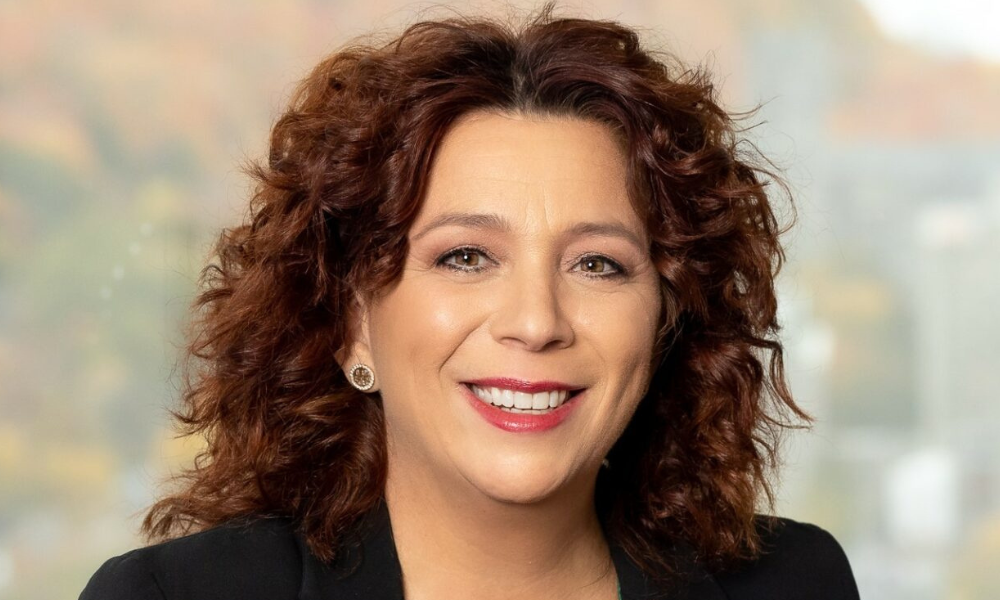What makes a true leader in insurance?

What makes a true leader in insurance? | Insurance Business Canada
Insurance News
What makes a true leader in insurance?
COO reveals key to unlocking a new generation
Insurance News
By
Gia Snape
Leaders and professionals from Canada’s insurance industry are gathering in Toronto today for the annual Women in Insurance Canada summit.
The in-person event, which features influential speakers, aims to celebrate the achievements of women in insurance and help develop the next generation of leaders.
“Authentic leaders are genuine, aware of their strengths and emotions, and show who they are by leading by example,” said Lisa Giannone (pictured), president and chief operating officer of BFL Canada. Giannone is among a roster of top insurance leaders speaking at the summit.
“It’s important to say things as they are, respectfully. For me, it’s about leading by example, sharing a vision, empowering people, and checking in with the team to ensure they have the right support to execute the vision.”
Authenticity and the importance of ‘leading by example’
Authentic leadership, characterized by genuine relationships, transparent communication, and a strong alignment between personal and organizational values, fosters trust and loyalty among employees and stakeholders.
Speaking with Insurance Business ahead of the Women in Insurance Canada summit, Giannone reflected on her career and the profound impact authentic leadership has had on her growth.
Giannone joined BFL Canada in 2009 and has deep experience designing insurance and risk management programs for several large multinational Canadian firms. She has also developed expertise in risk transfer for the mining, manufacturing, construction, forestry, and transportation sectors.
“I started in the industry almost 30 years ago, and I quickly learned that bringing value to clients accelerates growth and builds a sustainable business,” Giannone said.
“Our business is all about people, and focusing on them while driving results has advanced my career and led me to where I am today.”
Giannone said her leadership style is characterized by a clear vision and a strong focus on long-term goals. She believes in communicating this vision effectively and nurturing team members.
“Leading by example is crucial,” she stressed. “If you do what you expect your team to do, it’s much easier to achieve results. I focus on nurturing the company and its people for hard work and, obviously, on achieving results. But most importantly, it’s about leading by example.”
What’s the key to developing authentic insurance leaders?
Part of cultivating authentic leadership is encouraging the next generation of insurance leaders to lead by their values. Giannone strongly advocates for mentorship, highlighting the value of both formal and informal approaches.
“I’ve been mentoring a group of women informally for some time, and they know I’m available for advice and questions. Expanding my network to include my mentees is important,” she shared.
The BFL Canada leader was also instrumental in the organization starting its own formalized mentorship program two years ago.
“I’ve been a mentor in these groups for the past year and a half,” Giannone continued. “I prefer the one-on-one approach because it focuses on helping the individual succeed. When I mentor, I use what I’ve learned from my own mentors and try to bring that to my mentees.
“I learn every day, as any professional should. Mentorship is a relationship that goes both ways—I learn from my mentees as well.”
Giannone also offered valuable advice to young professionals in the insurance industry.
“First, the ability to communicate ideas is crucial. Innovation is key, especially in our industry, where we must always think ahead and be proactive,” she said.
“Secondly, it takes time and patience. It’s also important to have a plan for three, five, or even 10 years. Lastly, find a mentor. A mentor is different from a coach. Be honest and transparent with your mentor about what you’re trying to accomplish. Ask questions and seek guidance.”
Related Stories
Keep up with the latest news and events
Join our mailing list, it’s free!






